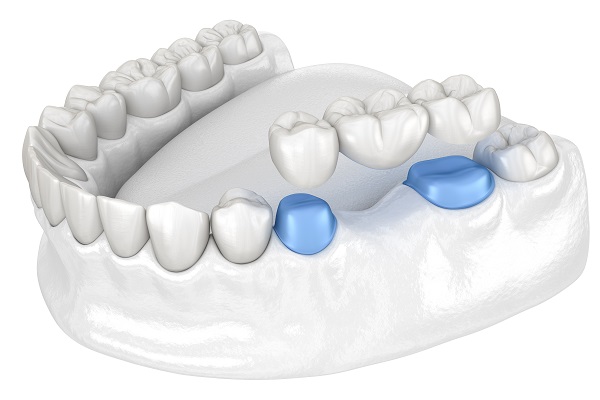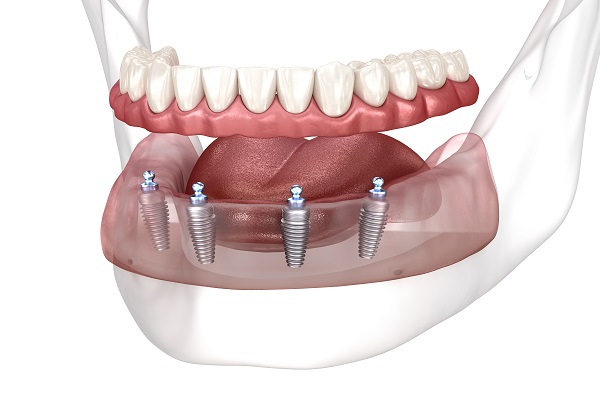How a Dental Bridge Addresses a Missing Tooth

In dentistry, a dental bridge is one of the popular options for closing the gap left by a lost or extracted tooth. Bridges are typically made up of crowns on the sides of the gap, which cover adjacent health teeth, called the abutment teeth. These teeth support the replacement teeth, which could be one or more. For fixed prosthetics, the bridge is cemented permanently onto the healthy teeth, thus literally bridging the gap left by the lost teeth.
How a dental bridge is used for replacing a missing tooth
When it comes to using a dental bridge for tooth replacement, there are three major options. The materials used for fabricating the bridge typically include metal and porcelain. The dentist will determine the type of bridge that best addresses the needs of the patients and discuss these options before commencing the process. The types of dental bridges include:
- Traditional fixed bridge: This restoration works by affixing the false tooth to a crown placed over the adjacent teeth for support
- Cantilever bridge: This option is similar to the fixed bridge, except that the false tooth is bonded to only one tooth instead of two
- Maryland bridge: These bridges are often used for front teeth to improve the smile’s appearance. It is also called a resin-bonded bridge and is fitted with metal or porcelain wings for support
Benefits of choosing dental bridges
There are many benefits to enjoy with dental bridges. They can help to strengthen damaged teeth, as well as enhance the appearance, alignment, bite, and shape of the teeth. By filling the gap left by the lost teeth, patients can prevent the existing teeth from shifting out of place. The bridge also stays securely in place and does not move around in the mouth. If the nearby teeth are decayed or damaged, the crown that comes with the dental bridge will cover and fortify them.
Getting a dental bridge
The dental bridge placement procedure is a multi-stage process that requires more than one dental appointment. In the first step, the dentist will administer a local anesthetic into the gum tissue before proceeding to reshape the teeth that will hold the crowns. Tooth preparation requires filing down part of the enamel layer to make the crowns fit securely.
After shaping the teeth, the dentist will make impressions of the lost tooth and the nearby teeth. The impression is forwarded to a dental lab to produce a bridge that fits the patient correctly. Until the final bridge is ready, patients will get a temporary bridge to protect the prepared teeth and cover the gap in the smile.
The permanent bridge should be ready in a few weeks, after which the patient will return to the dental office for placement. The dentist will check the bridge to ensure it aligns well with the remaining teeth and the bite.
Do you have one or more missing teeth?
If you have a missing tooth and think you might benefit from a dental bridge, book an appointment with our dentist for a consultation.
Request an appointment here: https://mmfamilydentistry.com or call MM Family Dentistry at (512) 477-9775 for an appointment in our Austin office.
Check out what others are saying about our dental services on Yelp: Dental Bridges in Austin, TX.
Recent Posts
Many dental patients are self-conscious about missing teeth. Depending on the exact teeth that have been lost, this condition can also make it difficult to chew food. In many cases, a dental bridge can be used to replace lost teeth and restore a patient's smile.As the name suggests, a dental bridge uses an artificial tooth…
A dental bridge is a method of replacing one or more lost teeth. People often use the word bridge to indicate a removable tooth replacement option, but dentists have a different opinion. Dental professionals consider bridges as a device that attaches to the teeth permanently and is not removable — at least not by patients.…
Having missing teeth can make normal tasks such as eating or speaking difficult, but there are several tooth replacement options available to allow you to restore function and improve the appearance of the mouth. Learn more about what alternatives are available to patients and the potential benefits of each method.Depending on the situation and how…
Dental implants are often used to replace individual teeth but can also offer multiple teeth replacement options. Such options include cantilever bridges, implant-supported bridges and implant-supported partials.Depending upon the condition of the person's gums and jawbone, a single implant can sometimes be placed to support two adjacent teeth. More commonly, multiple implants are used to…


